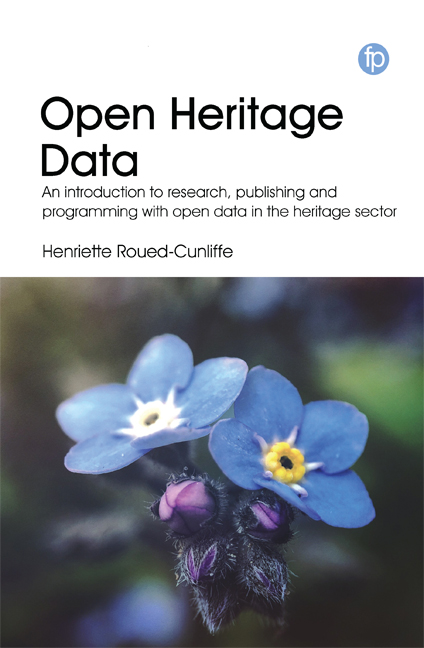 Open Heritage Data
Open Heritage Data Book contents
- Frontmatter
- Dedication
- Contents
- List of Case Studies, Figures and Tables
- List of Abbreviations
- Acknowledgements
- Preface
- Introduction
- 1 Openness in Heritage
- 2 Sharing Legally
- 3 Publishing Open Data
- 4 Using and Reusing Open Data
- 5 Visualising Open Data
- 6 Combining Open Data
- 7 Open Data for Research
- Appendix A Examples Used in the Book
- Appendix B Introduction to Coding
- References
- Index
6 - Combining Open Data
Published online by Cambridge University Press: 23 July 2020
- Frontmatter
- Dedication
- Contents
- List of Case Studies, Figures and Tables
- List of Abbreviations
- Acknowledgements
- Preface
- Introduction
- 1 Openness in Heritage
- 2 Sharing Legally
- 3 Publishing Open Data
- 4 Using and Reusing Open Data
- 5 Visualising Open Data
- 6 Combining Open Data
- 7 Open Data for Research
- Appendix A Examples Used in the Book
- Appendix B Introduction to Coding
- References
- Index
Summary
Combining or mapping datasets serves a very important purpose in terms of open data. This is because the real beauty of open data lies in the ability to use data from different sources together. For example, by creating a simple portal allowing different datasets to be searched and browsed in the same platform – such as the DPLA/Europeana tool shown in Chapter 4, which sends a similar call to both DPLA and Europeana and allows the results to be visualised side by side.
Over the years there have been many attempts to make coherent standards and thesauri for various domains in the heritage sector. As with data sharing, libraries were the prime movers on common data standards, with standards like MARC developed by Henriette Avram in the 1960s for the US Library of Congress (Schudel, 2006). The MARC standards were developed to catalogue library metadata from books, articles and other publications. In the heritage sector books and artworks are some of the easiest items for which to create a common standard, as they often have very similar metadata (e.g. author/ artist, title, publisher, length/size, type/technique/media/genre). However, the need for shared metadata is greater for books than for artworks because there are often many copies of a book in many different institutions which can make use of the shared information. This is why libraries for many years led the drive to share metadata and were able to successfully roll out a metadata standard that most countries use in one form or another.
The current push in sharing metadata for heritage items is driven by galleries and art museums. Many of these heritage data-sharing sites are image based. Images, whether reproductions of artworks or digitisations of documents or photographs, also have a pretty similar metadata structure: creator, date, subject, etc. The use and reuse of the images is heavily reliant on their copyright status, but makes for very interesting projects in creative communities. However, there are large amounts of heritage material that are not so easy to share or to find a data standard for, despite many years of trying.
- Type
- Chapter
- Information
- Open Heritage DataAn Introduction to Research, Publishing and Programming with Open Data in the Heritage Sector, pp. 93 - 112Publisher: FacetPrint publication year: 2019
